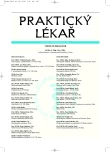Present-day population health in selected European countries in relation to basic characteristics of socio-economic development
Současný stav populačního zdraví vybraných evropských zemí ve vztahu k základním charakteristikám sociálně ekonomického rozvoje
Práce se zabývá analýzou vztahů mezi sociálně-ekonomickou úrovní souboru evropských zemí ve vztahu k vybraným ukazatelům populačního zdraví; zvláštní pozornost je věnována postavení ČR. Korelační analýzou byla prokázána střední až silná závislost ukazatelů populačního zdraví na úrovní hrubého domácího produktu přepočteného na 1 obyvatele a všemi indikátory populačního zdraví (střední délka života, ukazatelé standardizované úmrtnosti aj.). Index HDI byl vysoce korelován se všemi indikátory zdraví. Česká republika byla hodnotou HDI v roce 2002 na 32 místě ze mezi 177 zeměmi světa, hrubý domácí produkt na 1 obyvatele činil v uvedeném roce 15 780 amerických dolarů vyjádřených v paritě kupní síly, podíl výdajů na zdravotní péči činil v posledních letech 7,3 % HDP. GINI index vyjadřující stupeň nerovnosti příjmů nebyl v daném souboru ve statisticky významném vztahu k indikátorům populačního zdraví. V období let 1995 až 2003 došlo v ČR k zlepšení všech indikátorů zdraví s výjimkou úmrtí na dopravní úrazy. Přes nedořešené problémy financování zdravotnictví ČR, disponuje země dostatečným ekonomickým potenciálem pro zajištění kvalitní zdravotní péče.
Klíčová slova:
sociálně-ekonomický rozvoj, indikátory zdraví, Evropa, Česká republika
Authors:
L. Strnad 1; A. Stožický 2
Authors‘ workplace:
Zdravkonzult Hradec Králové, I.
1; Lékařská fakulta UK v Praze Ústav sociální medicíny a veřejného zdravotnictví Vedoucí MUDr. František Schneiberg, CSc.
2
Published in:
Prakt. Lék. 2006; 86(5): 247-251
Category:
Reviews
Overview
The article deals with the relationship between the socio-economic level and selected indicators of population’s health in a group of European countries; special attention is paid to the Czech Republic. Results of correlation analysis revealed intermediate to strong dependence of all indicators of population’s health (life expectancy, standardized mortality rate, etc.) on the level of per capita Gross Domestic Product (GDP). Human Development Index (HDI) highly correlated with all health indicators as well. In 2002, the Czech Republic was placed 32nd in a table of HDI for 177 countries of the world. GDP per capita was 15 780 USD p.p.p. (purchasing power parity) in the same year. Total health expenditure as a percent of GDP has been 7.3% in recent years. The GINI indicator, which expresses a grade of income inequality, did not show a statistical significant relation to indicators of population’s health. All health indicators – except deaths due to traffic accidents - improved in the Czech Republic in the period 1995 – 2003. Despite many unresolved problems in health care financing, the Czech Republic displays sufficient economic potential for assuring high quality health care.
Key words:
socio-economic level, health indicators, Europe, Czech Republic
Labels
General practitioner for children and adolescents General practitioner for adultsArticle was published in
General Practitioner

2006 Issue 5
- Advances in the Treatment of Myasthenia Gravis on the Horizon
- What Effect Can Be Expected from Limosilactobacillus reuteri in Mucositis and Peri-Implantitis?
- Metamizole in perioperative treatment in children under 14 years – results of a questionnaire survey from practice
- Memantine Eases Daily Life for Patients and Caregivers
- Metamizole vs. Tramadol in Postoperative Analgesia
Most read in this issue
- Temporal arteritis and polymyalgia rheumatica – an acute condition in rheumatology.
- Congenital syphilis again on the scene worldwide. II. Clinical picture.
- Negative pressure wound therapy at patients with diabetic foot. (Vacuum Assisted Closure)
- Effect of piracetam on severe vascular type dementia symptoms – nonintervention retrospective follow-up
